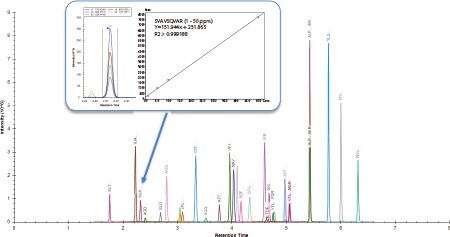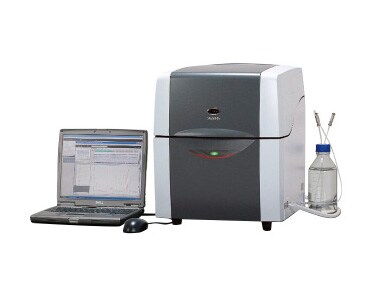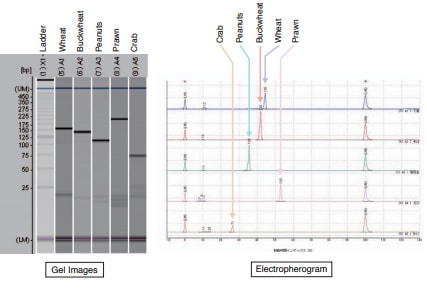An example of simultaneous analysis of allergens using LC-MS/MS is shown, which contains 150 MRMs for 31 peptides of 13 allergenic proteins identified from 8 foods regulated in the US (milk, eggs, fish, crustacean shellfish, tree nuts, peanuts, wheat and soybeans). They were successfully detected with high sensitivity and selectivity.

Triple Quadrupole LC-MS/MS

Chromatogram of peptides mixture derived from 8 food allergens, and magnified view of 5 MRM transitions for wheat peptides and its calibration curve

Chromatogram of different breads
Japan was the world's earliest adopter of a labeling system for foods containing allergens. DNA analysis by qualitative PCR can be performed on five (wheat, buckwheat, peanuts, prawn, and crab) of the seven specified raw materials (excluding egg and milk) .

Microchip Electrophoresis System for DNA/RNA Analysis
MCE-202 MultiNA

Analytical results for PCR products from allergenic substances

